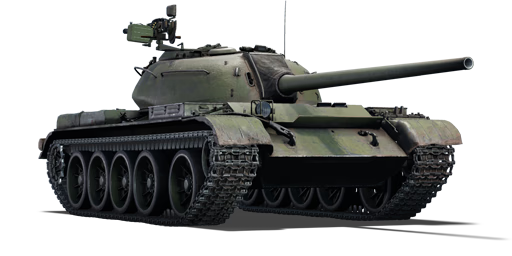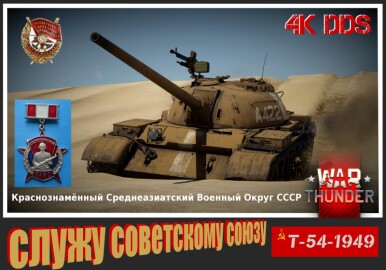The T-54 Model 1949 is the second variant of the T-54 main battle tank family. The T-54 Model 1949 variant, manufactured from 1949 to 1952, incorporated several improvements to the turret from the previous T-54 Model 1949 variant, as well as a wider track and a better, modernized transmission. The turret is dome-shaped with flat sides, and the shot trap has been removed to provide slightly better protection. The new turret was inspired by the one used on the IS-3 heavy tank but with a distinctive rear overhang and shorter bustle. The original fender machine gun mounts were replaced with more traditional bow machine gun mounts.
Introduced in Update 1.47 "Big Guns", the T-54 (1949) is an upgraded variant of its predecessors. It has a better-designed turret without the shot-trap and slightly improved protection. However, this is offset by weaker hull armour, which has a small impact on its overall survivability. Access to new armour-piercing discarding sabot (APDS) ammunition, which has superior penetration but lacks post-penetration damage, is another upgrade. As a result, this new ammunition should only be used to engage the most heavily armoured targets.
















